Location: 2290-2, Okubo, Oaza-Ikawa, Aoi-ku, Shizuoka City, Shizuoka Prefecture
View of the embankment (lake side) from the right bank
When we reached the Igawa Dam, the tour of dams on the Oigawa River system finally reached its climax. It is surprising that even this deep in the mountains is within the city of Shizuoka, but it is a sign that the city has such a long and wide land area.
The Igawa Dam is also a hollow gravity dam, which means that the inside of the embankment is hollow, which is very rare in Japan. The Hatanagi No. 1 Dam and Hatanagi No. 2 Dam, located near the Igawa Dam, are also hollow gravity dams, and it is also unusual for dams of unusual types to be built in large concentrations.
Having said that, the hollow gravity type can reduce the construction cost because the amount of concrete used for construction can be saved by making the inside hollow. In the transitional period from the postwar period of turmoil to the period of rapid economic growth, the hollow-gravity type is also a solution to the paradox of reduced construction costs and increased demand for electric power, so it may be appropriate to think of it to the extent that there happen to be three hollow-gravity types in the neighborhood.
Furthermore, the Igawa Dam is the first hollow gravity concrete dam in Japan, and the second tallest dam of its type after the Hatanagi No. 1 Dam.
View of the top edge from the right bank
Hollow gravity type is coolly called "Hollow Gravity". In rare cases, this is also used.
There are three radial gates. The sloping structure at the far end in the above photo will be explained later.
The top end is served by Prefectural Road No. 60, the Minami-Alps Park Route, which, as you can see, is open to automobile traffic.
View of the dam lake from the top
The water in the dam lake was a little muddy white, probably due to heavy sedimentation. By the way, the building on the left is the management office. In the back of the building, there is a store and a coffee shop where you can have a light meal.
View of the Incline
It is an unusual incline. There are two seats in a row, but they look like the answerer's seat in the quiz "Time Shock" (old?), and the whole unit seems to descend diagonally. It looks like a seat for the respondent of the quiz "Time Shock" (old?), and the whole unit seems to go down diagonally. Sorry if it is hard to see.
View downstream from the top
In the back here.Ousumi DamThere is a The building on the left bank is the power plant and the structure on the right bank is the substation.
View of the power plant from the top
Close-up shot of the power plant portion.
Water intake dust remover
This machine is called an intake dust remover and is responsible for removing debris from the dam lake. Since a prefectural road passes through the top end of the dam, the machine is built in such a way that it straddles the prefectural road.
Nameplate of water intake dust remover
It seems to have been produced in 1999. Since it is relatively new, I imagined it to be mechanical, but I would like to see how it actually works with my own eyes.
View of the Igawa Denryoku-kan from the top
This is the "Igawa Denryokan" operated by Chubu Electric Power Co. It is located on a hill on the right bank, and you have to climb up from the stairs in front of it, which is quite tough for me, as I am exhausted from Nagashima Dam.
The dam nameplate in white on the slope of the right bank
On the slope on the right bank is a sign with the name of the dam, which reads "Igawa Goro Dam. This is a kind of nickname taken from Goro Inoue, the president of Chubu Electric Power Company at that time. Goro Inoue was originally an engineer of Toho Electric Power Company who was transferred to Igawa Power Company, and was involved with the Igawa Dam since its construction planning. He was involved in the construction of the Ikawa Dam from the time it was planned. He also asked, "Since dams in the United States are often named after people, shouldn't there be a dam named after a person in Japan as well? At the completion ceremony, Mitsunosuke Kambe, the president of Hazama Corporation (at that time), said, "Goro Igawa Dam", which was the inspiration for the name of the dam.
>>Plutonium Summer 2001 No.34 Pluto (32)", a bulletin published by the Nuclear Fuel Policy Research Institute, Inc.
View of the embankment from the Igawa Denryokan
The above materials were very moving to read. At the Shiogo Dam, I learned about the anti-dam movement, and at the Igawa Dam, I remembered the old days... and it made me think about many things.
Now, we moved to the "Igawa Denryokan". The embankment seen from here is quite impressive. Until the completion of these high dams, the Oigawa River was a raging river, so much so that it was said, "I can't get over it..." After the completion of the dams, the river shifted to a calm river. The Oi River still needs dams. If the dam were to be removed, the Oi River would become a raging, muddy river that would be completely transformed from a calm river to a raging, muddy river during the snow melt from Mt. Is it really possible to maintain a river simply by raising the embankment or lowering the river bed? Isn't that exactly what is destroying the environment? One dam or a levee several thousand meters high? Which is more effective? It may be a paradox that will never be solved.
model
There is no staff at all inside the powerhouse. There is even a sign at the entrance stating this fact. This may be due to a cost-cutting measure by Chubu Electric Power Company, but what is the truth?
So, I took a picture of the model after all. This model clearly shows that the Igawa Dam is a hollow gravity dam. But is it really this hollow? I think it is somewhat exaggerated. In addition to the model, there is a video of the construction of the dam, which is very impressive.
dam characteristics
| da mu | Model | Hollow Gravity Type concrete dam | Access to D@M | Get off at Sagara Makinohara IC of Tomei Expressway The rest of the way is National Route 473 heading north toward Kawane Town. After entering Kawane Town and eating taiyaki at Ieyama, head north again on Route 473. After driving for a while, you will hit a T intersection with Route 362. Turn right at the intersection and go north on Route 362. There is a road that enters Prefectural Route 77 near Chigashira, so turn onto that road and continue north. When you pass the Okuizumi station in the Igawa line in the railroad, you will see the fork of the Sunmatakyo and the Precipice. Turn right onto Prefectural Route 388 toward the precipice. From here on, we will rely on our intuition (not much) and head for the Igawa Dam. After passing the Ousumi Dam and driving for a while, you will come to an intersection with Prefectural Road No. 60. Turn right on it. When you see the railway station in the railroad "Igawa" on your right hand, you will see the Igawa dam soon. |
|---|---|---|---|---|
| Objective | generation (e.g. power) | |||
| Bank height | 103.6m | |||
| Bank length | 243m | |||
| Dam volume | 430,000m3 | |||
| savings water (esp. cool, fresh water, e.g. drinking water) pond | Watershed Area | 459.3 km2 | ||
| Reservoir area | 422ha | |||
| Total storage capacity | 150,000,000m3 | |||
| Effective water storage capacity | 125,000,000m3 | |||
| Name of Dam Lake | Lake Goro Igawa | |||
| River Name | Oigawa River System (river with a) gaping hole in the middle of a river | |||
| Year of launch | 1952 | |||
| Year Completed | 1957 |
Other facilities/observations
| Parking lot | ○ | I wasn't particularly intrigued by it. You know, you actually go there and you see and hear things and then you go home and you do some research. It was a very interesting experience to learn about dams from a different angle. It was possible to visit the inside of the embankment of the Igawa Dam by applying at least one month in advance of the desired date. They are not accepting it now due to the unmanned operation of the Igawa Power House (added on 9/25/2004: Ash Ace-san Thanx!). |
|---|---|---|
| Toilet | ○ | |
| Park | × | |
| PR Exhibition Hall | ○ |

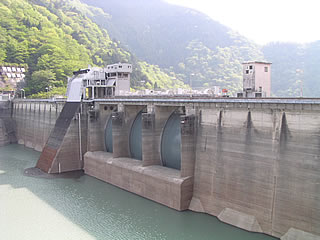
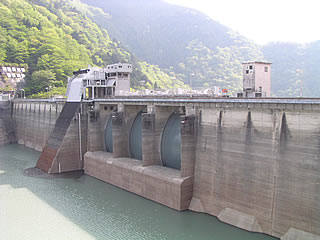
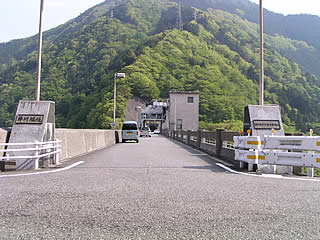
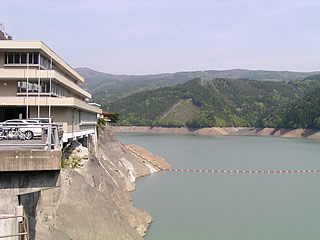

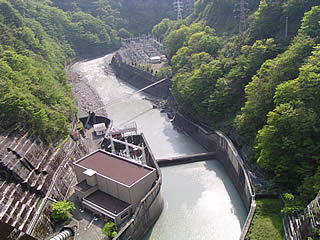

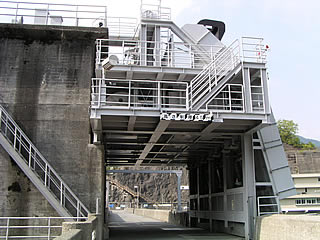
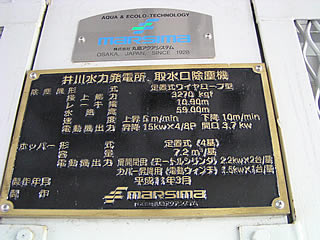

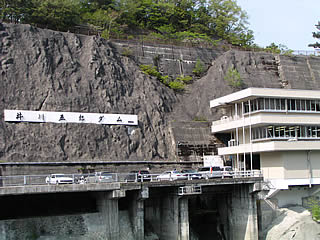
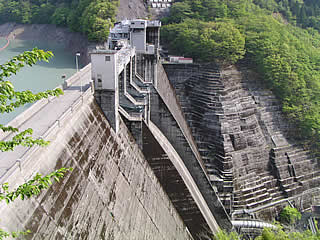



Comment